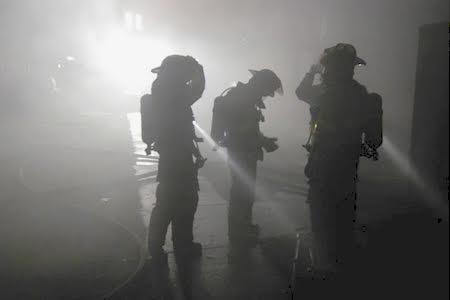
WASHINGTON (PAI) – With fewer than two weeks before a Jan. 19 deadline for comments, the Fire Fighters are gaining allies in their campaign to ban toxic chemicals from the nation’s furniture.
The campaign, which started with a proposal from IAFF, several consumer groups and other organizations last year, is to convince the U.S. Consumer Product Safety Commission (CPSC) to write rules to outlaw such chemicals. They endanger Fire Fighters’ lives when the workers battle blazes, especially home blazes, IAFF says. The prime result is cancer, it adds.
Of the 132 comments CPSC has received on its proposed rule so far, only one, from the American Home Furniture Alliance, opposes it. The alliance claims the rule is unnecessary. It contends its members already follow much tougher rules previously imposed by California.
The chemicals, called organohalogens, are in furniture, children’s toys, mattresses, electronic product casings and other goods. When released and inhaled, they cause cancer.
Pat Morrison, IAFF’s top safety and health official, told CPSC last month. “This is the largest health-related issue facing the firefighting profession.”
Virtually everyone in the U.S. is exposed to organohalogens, Morrison said. But Fire Fighters “have a much higher risk of suffering the negative, cancer-causing effects of carcinogenic flame retardants when those chemicals burn in a fire – from the air they breathe, during the overhaul of flames and absorption through skin during and after working on a fire.”
The union has picked up support from Consumers Union, the Consumer Federation of America, the Physicians for Social Responsibility, U.S.PIRG and an environmental group in Minnesota, the League of United Latin American Citizens, the American Academy of Pediatrics and the Connecticut Nurses Association, among others. LULAC launched a letter-writing campaign to CPSC among its members for the ban on the chemicals.
“It is well documented that organohalogen flame-retardants migrate out of products and into homes, putting children and families at risk for very serious health problems,” Connecticut Nurses Association Environmental Health Coordinator Hacah Boros, RN, wrote. Her group has 65,000 nurse members. She said the chemicals get into people’s lungs from household dust.
“Americans have some of the highest blood levels of flame-retardants in the world. The highest human levels of toxic flame retardant chemicals have been found in young children from communities of low socio-economic status and communities of color. Studies have shown toddlers are the most vulnerable with blood levels 3-4 times what their mothers accumulate.
“These organohalogen flame-retardants offer no real fire safety benefit. They only delay the foam underneath the fabric from igniting for about 3-7 seconds. Meanwhile, the fabric has gone up in flames and the chemicals from the foam are actually more toxic than smoke. Fire injury and death are generally caused by smoke inhalation, not by actual burns. We fully sup-port removing products from the market that are made with these flame-retardants,” she said.
The Fire Fighters’ Morrison also warned the CPSC that even if it bans the organohalogens, the chemicals industry historically evades sanctions “by making slight, inconsequential changes” to its chemicals, and by renaming them. The industry has yet to comment on CPSC’s proposal.
“When toxic flame retardants burn – and they do burn – it creates a serious health risk for our members,” IAFF President Harold Schaitberger said. “There is significant scientific data that show the association between firefighting, exposure to deadly toxins and cancer.”
Photo: Firehouse blog










